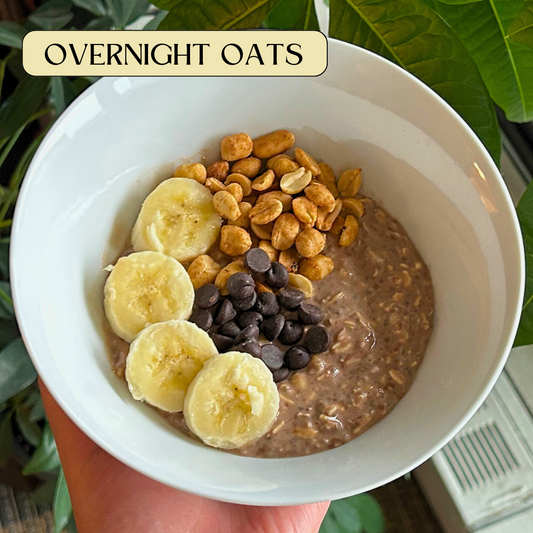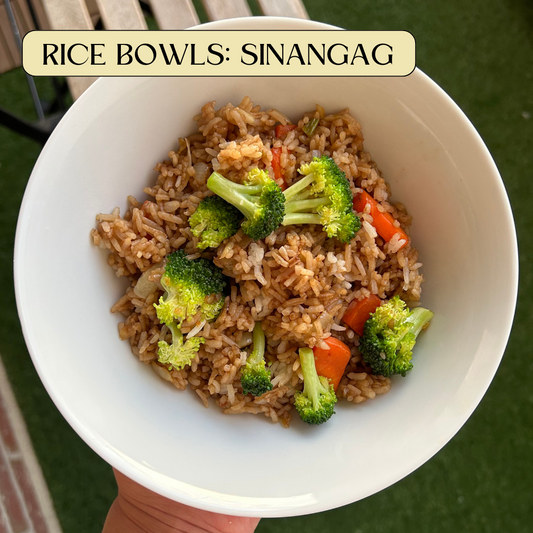When I first moved out, one of my main concerns was building up my kitchen. I had everything I needed at my parents' place - from plates, pots, utensils, and most importantly, all the seasonings. So, starting from scratch was pretty overwhelming. The grocery store had isles and isles of different spices, herbs and sauces - but where do I start? What spices did I need immediately? What herbs and spices where necessary? Not only was I concerned for the herbs and spices, but what sauces did I needed? What condiments?
I didn't want to get too much stuff at one time - seasoning was expensive and I didn't know what I was going to use them for yet. It took a lot of trial and error, but now, I can safely say I know what seasonings I use regularly, which ones I like to keep at bay (haha), and the ones I've used once once in the past 7 years.
Here are some of my kitchen seasoning staples, items I recommend getting first as you build up your seasonings, their uses and some facts I found through a fairly brief internet search.
Spices
Salt
Not technically a spice, but a mineral.
Salt is such an important part of any meal. A pinch of salt enhances flavour, but too much can ruin the meal. You want to find the right balance. Like any other spice, always taste your dish before adding a little bit of salt at a time.

The Different Salts
There are so many different types of Salt - there's the classic, table salt; there's the trendy, Himalayan pink salt; there's even herb-infused salts like garlic salt, rosemary salt... the list goes on and on.
At it's core, all salt works the same. It enhances flavour and is used as a binder, stabilizer, and sometimes, a preservative. The reason why you may want to get a specialty salt, such as a herb salt, is to emphasize a certain flavour profile or add more depth to your dish. Having a herb salt in your kitchen is also a convenient way to incorporate a herb (or herbs) into a recipe.
Some salts, like the Himalayan pink salt may have added health benefits. Other salts, such as flaky salt or fleur de sel, can add crunch or help a dessert by balancing its sweetness.
Table salt is fairly cheap and very versatile (compared to the other salts out there), especially in bulk, so I'd start with table salt to add in first to your spice collection and invest in a salt shaker. Alternatively, I would opt for Himalayan salt because their mineral content is higher (i.e. contains trace minerals such as calcium, potassium, and iron), it has a lower sodium content, and is less processed compared to table salt.
Pepper
Like salt, I add Pepper to everything. Pepper adds a lil kick to any dish, adds balance, and cuts through rich and salty flavours. When I go to the grocery store, I usually opt for whole peppercorns than ground pepper. Although buying ground pepper is a lot more convenient, freshly cracked peppercorns taste significantly better. In addition, peppercorns have a higher shelf life than ground pepper, which looses its flavour and aroma quicker than whole peppercorns. I like to use whole peppercorns in marinates (such as adobo) as opposed to ground because they can withstand the marinating time without loosing their flavour or becoming overly dominant.

Chili Flakes
My boyfriend and I love spicy foods. We love collecting different types of hot sauces to go along with different meals. So of course, Chili Flakes would be an important kitchen staple for us. Infusing chili flakes adds a lil kick to a dish. When I'm frying up garlic or onions, I almost always add some chili flakes to add some heat to our dish. Frying chili flakes in oil releases a stronger heat than just sprinkling the dried chilis onto a dish.

Yellow Curry Powder
Asian Curries are a part of my meal rotations, so I always have powdered curry on hand. Especially Yellow Curry Powder. Yellow curry powder is more mild and slightly sweeter compared to red or green curry powder, for instance, so I find it to be more versatile in its use. Kare-kare (kare meaning curry in Tagalog) is a popular Filipino dish but is fairly different compared to other Asian curry dishes. For one thing, kare-kare is a rich and savoury peanut sauce; other asian curry dishes (like the ones deriving from India, Japan, or Thailand) are usually a combination of spices and herbs. That being said, my knowledge for curry is pretty limited, and I often buy curry pastes or premade spice mixes for dinner, then add yellow curry powder accordingly.

Cinnamon
I love cinnamon. It's my go-to spice for any bread pastry: cinnamon rolls, banana bread, pancakes... sugar and cinnamon is the BEST combo. Not only do I use cinnamon in baked desserts, but in teas as well. I especially need cinnamon for this concentrated detox tea I make every month.

Herbs
Dried Basil
Dried Basil probably isn't as a crucial as salt and pepper, but I do add it to almost everything. I love basil - both fresh and dried. I always have dried basil at hand since it's harder to maintain fresh basil (it's a very delicate herb). I add dried basil to every pasta dish, to salads, to my eggs - I probably add basil to every non-asian dish I make. It's sweet, a little bitter, aromatic, and adds some colour to any dish.
Bay Leaves
I use Bay Leaves in my soups, stews, and marinates. Contrary to popular beLEAF, bay leaves do contribute flavour to a dish. It has a distinct herbal and slightly peppery flavour and you can definitely notice when it's there or not there. It's a great aromatic, adds depth, and cuts through fatty proteins. Bay leaves are a staple in Filipino cuisine and is used in dishes like Adobo, Sinigang and Kaldereta.

Rosemary
Dried Rosemary isn't something I use as often as the aforementioned spices, but it is a go-to herb when I make a Mediterranean-inspired marinate, when I make a simple pan-friend chicken/salmon, or when I make roasted potatoes. I think dried rosemary is best used in roasted proteins and veggies, and pairs great with citrus, garlic and other herbs. When I'm feeling fancy or want to impress, I like to top my homemade bread with rosemary for some extra flavour and fragrance.
Oregano
Like Rosemary, I don't use Oregano often, but it is a great kitchen staple. Oregano is a savoury, slightly sweet, slightly citrusy herb and also pairs really well with roasted proteins and roasted veggies. I add oregano to pastas, pizzas, and other Mediterranean-inspired recipes.
Sauces
I find sauces to be just as important as the spices and herbs. If I don't know what to eat, a combination of just a couple of these sauces + noodles makes for a satisfying meal. Some of these aren't actually sauces, but for convenient's sake, I'll refer to them as such.
Soy Sauce
In native Filipino languages, Soy Sauce is known as toyo. It is a stable in Filipino and Asian cuisine and can be found in dishes like Adobo, Sinigang and Pancit. The flavour profile of toyo slightly differs from Chinese soy sauce (the roots of soy sauce can be traced back to China): Filipino soy sauce is a little bit milder and sweeter; it's a lighter sauce and is generally fermented less than Chinese soy sauce. I grew up on toyo, it is - hands down - my favourite seasoning and condiment. I can eat it with any rice dish, and it makes an incredible marinate. When I can, I usually opt for soy sauce over salt. I usually get the litre bottles since I use it so often. My favourite toyo brand is Marca Piña, but when I'm in a pinch, I don't mind using Chinese soy sauce.

Fish Sauce
Another one of my favourite sauces and condiments growing up. In the Philippines, fish sauce is called patis. Patis is made from fermented fish, and is another staple in Filipino and Southeast Asian cooking. It's salty, savoury, very umami. It has a fairly pungent smell, but it hasn't stopped 6 year-old me from eating it daily with rice and eggs! My go-to fish sauce brand is Squid - they even have vegan fish sauce! Marca Piña has their own fish sauce but Filipino patis tends to be heavier than Thai or Vietnamese fish sauces.

Tahini
The main reason why Tahini is such an important staple in my household is because I make hummus every couple of days. Tahini is made from sesame seeds and have a great shelf life. It's an incredibly versatile sauce: you can eat it on toast, use it as a dip, or stir into your soups. Would I use tahini over sesame paste? Probably not. Even though they're both made from sesames, their flavour profile are pretty different; tahini having a very rich, nutty, slightly bitter flavour, and sesame paste having an earthy, slightly sweet, slight bitter, prominent sesame flavour (if that makes sense).

Gochujang
Gochujang is a fairly new sauce/paste I've incorporated into my cooking but it has quickly became a staple! I'm surprised I haven't cooked with it sooner. It is a Korean fermented chili paste/sauce made from red chili powder, glutinous rice, fermented soy beans and salt, and is sweet, savoury, and a bit spicy. Again, very umami. It is a staple in Korean cuisine, and very versatile. Use it as a sauce, a dip, and in marinates.

Sriracha
Love Sriracha Sauce. Originating from Thailand, the name stems from the city, Si Racha, in the Chonburi Province. Although, I must admit that my favourite sriracha sauce is from Huy Fong Foods (a company that was founded in LA's Chinatown by Vietnamese-born immigrant, David Tran). I like the slightly sweet, slightly tangy hints to it and I like that the heat level doesn't get any hotter e.x. one teaspoon vs. a cup pretty much has the same heat level - the sauce flavour itself just gets more prominent. I used to use Sriracha instead of ketchup. I mean, I still use sriracha sauce as a condiment (especially mixed with kewpie mayo), but I definitely use it more as an ingredient. It usually makes up the base for a lot of my go-to quick noodle meals.

Sesame Oil
Sesame Oil comes from sesame seeds (obviously). Sesame plants have been farmed in Asia (particularly in India, China and Japan) for thousands of years and is very prevalent in Asian cuisine. It is an incredibly rich oil with a nutty, sweet and slightly bitter taste. The more toasted the sesame seeds, the more intense the flavour. As such, I don't really cook/fry with sesame oil the same way I would with other fats like canola oil, vegetable oil, or even butter. When I use sesame oil, I usually mix it into a sauce or add it last to veggies before turning off the heat. I like to keep the flavours from sesame oil prevalent and I find that adding it in the beginning of a recipe, rather than the end, looses the taste as the dish progresses.

Vinegar
Vinegar in Tagalog can be translated to sukâ and is such an important staple in filipino kitchens. Sukâ has been used in precolonial Filipino cuisine for centuries as a preservative and for its flavour.
Vinegar is also a very common condiment in the Philippines, known as sawsawan. Depending on what the meal is, there will be a sawsawan served as a dipping sauce, and can include various ingredients such as chillis, ginger, garlic, etc. You can even buy premade sawsawans in the grocery store, although it's commonly made right at the table alongside other sides. Honestly, I can do a whole article on the history and importance of vinegar in Filipino cuisine and how it's evolved... So I'll save all that info for another time haha.
That being said, I always keep 3 different types of vinegars in my kitchen: white vinegar, rice vinegar, and apple cider vinegar.

White Vinegar
White Vinegar is made from grain alcohol. If I were to choose between only one types of vinegar to keep in my kitchen, it would be white vinegar. Not only is it a great ingredient to keep around, but it's the best natural cleaner out there. As an ingredient, white vinegar is incredibly versatile; it has a distinctly sharp, tangy flavour and a high acidity level, so it's great for pickling, salad dressing, marinades, and sauces.
Rice Vinegar
Rice Vinegar is made from rice wine/alcohol. This is the vinegar I primarily use in cooking and in my sawsawan. Rice vinegar isn't as acidic as white vinegar, so it's relatively mild, with a hint of sweetness. I use rice vinegar for any Asian dish that requires vinegar and in sauces. Although, if I want to have a stronger tasting sawsawan, I'll use a 50/50 rice vinegar and white vinegar mix.
Apple Cider Vinegar
Apple Cider Vinegar is made from apple cider/apple juice. Apple cider vinegar is less acidic than white vinegar, but more acidic than rice vinegar. It has a fruity, tangy and slightly sweet flavour so I like to use this in salad dressings; I'll also sometimes mix it with rice vinegar to make a dipping sauce. Apple cider vinegar also has some digestive health and weight loss benefits, so it's an important ingredient in this concentrated detox tea I make every month.
Honorary Mentions
Ingredients I still use pretty frequently in the kitchen:
- Olive Oil: Especially for marinates, sauces, and dips.
- Smoked Paprika: A smokey spice I like to add for an extra kick and some colour.
- Cayenne Pepper: If I want to add a lil extra heat to a dish, I'll sprinkle some cayenne pepper to top it off.
- Chili Oil: Again, adds an extra kick to your dish. Asian Chili Oil in particular is my fav: it has some heat, it's rich, slightly sweet, and very umami. All of the Laoganma chili oils are my go-to. Drizzle some on top of your dish and it'll look GORGEOUS.
- Dried Parsley: It has a long shelf life and I like to use this as a garnish.
- Sweeteners: This includes white sugar, brown sugar, and honey. I definitely use this more in baked goods, but sometimes I add sweeteners to my sauces/savoury dishes to balance out any spiciness, saltiness, high acidity, and to enhance umami.

So, that's about it: 5 spices, 4 herbs, and 7 sauces I would consider to be really great kitchen staples - especially if you're trying to build up your kitchen pantry. It's been really fun building up my seasoning collection, and determining what spices, herbs, and sauces I use the most. As someone who grew up in a Filipino household, I tend to make dishes that cater to my Asian palette, and so my kitchen definitely reflect that. However, if you're still stumped on what seasonings to start off with, I recommend determining the recipes of your favourite dishes and using any of their seasonings to help build up your kitchen.





